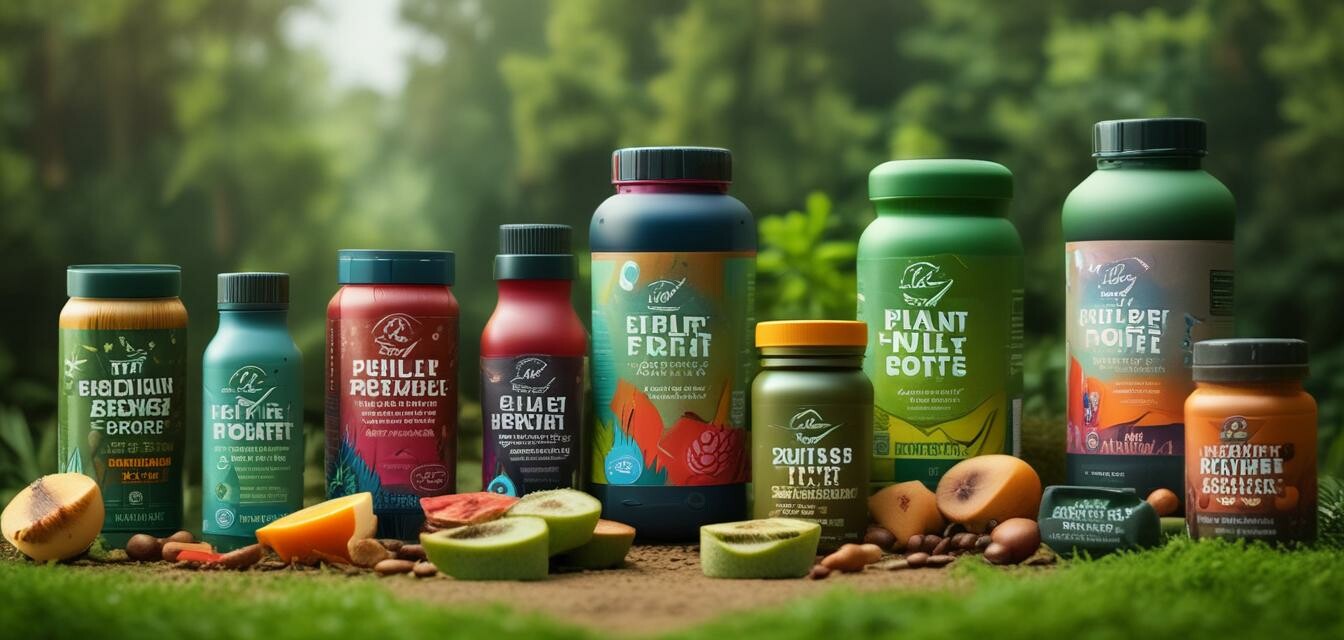
The Green Revolution: Sustainable Practices in Sports Nutrition
Key Takeaways
- Sustainability is becoming a priority in the plant-based sports nutrition market.
- Manufacturers are adopting eco-friendly practices, from sourcing ingredients to packaging.
- Plant-based diets are gaining popularity among athletes looking for sustainable nutrition options.
- Education on sustainability in sports nutrition is crucial for consumer awareness and choice.
The plant-based sports nutrition market is undergoing a significant transformation. As more athletes and fitness enthusiasts prioritize sustainability, manufacturers are responding with commitment to eco-friendly practices. This article explores how sustainability is shaping the plant-based sports nutrition industry and highlights the efforts of manufacturers taking strides in this green revolution.
The Rise of Sustainable Sports Nutrition
In recent years, the fitness industry has recognized the importance of environmental responsibility. Athletes are increasingly aware that their food choices can impact the planet. As a result, there is a notable shift towards products that reflect sustainability. The use of plant-based ingredients, for instance, not only offers health benefits but also reduces the carbon footprint associated with animal agriculture.
Key Drivers of Change
Several factors are driving this shift towards sustainable practices in sports nutrition:
- Consumer Demand: An increasing number of consumers are demanding transparency and sustainability.
- Brand Responsibility: Companies are taking responsibility for their environmental impact.
- Innovative Ingredients: New and sustainable sources of protein and nutrients are being discovered.
Eco-Friendly Sourcing and Manufacturing
One of the key aspects of sustainability in sports nutrition is the sourcing of ingredients. Many companies are seeking out practices that are not only good for athletes but also good for the planet. The following table summarizes some eco-friendly practices in ingredient sourcing:
| Practice | Description |
|---|---|
| Locally Sourced Ingredients | Purchasing ingredients from nearby farms to reduce carbon emissions linked to transportation. |
| Organic Farming | Using farming methods that avoid synthetic pesticides and fertilizers for healthier ecosystems. |
| Regenerative Agriculture | Practices that restore and improve soil health, enhancing carbon sequestration. |
Impact on Product Development
With the emphasis on sustainable practices, manufacturers are developing innovative products. This includes the introduction of new plant-based protein sources and nutritional supplements that align with eco-friendly values. For example, manufacturers are experimenting with ingredients like:
- Pea Protein
- Brown Rice Protein
- Hemp Seed Protein
Innovations in Packaging
Alongside sourcing practices, packaging is another critical area where sustainability is making an impact. Eco-friendly packaging options are gaining traction among sports nutrition brands. Some of the popular approaches include:
- Biodegradable Packaging
- Recyclable Materials
- Minimalist Packaging Designs
Benefits of Sustainable Nutrition for Athletes
Adopting a sustainable approach to sports nutrition not only benefits the environment but also offers several advantages for athletes:
| Benefit | Description |
|---|---|
| Enhanced Health | Plant-based diets are linked to better overall health and wellness. |
| Increased Energy | Better nutrition can lead to improved physical performance. |
| Reduce Environmental Impact | Lower carbon footprint and reduced waste contribute to sustainability. |
Education and Awareness
To fully embrace the green revolution in sports nutrition, education plays a vital role. Athletes and consumers need to understand the significance of making environmentally conscious choices. Brands can contribute to this awareness by:
- Creating informative content about their sustainable practices.
- Engaging in community events focused on nutrition and sustainability.
- Partnering with organizations that promote eco-friendly practices.
Conclusion
The green revolution in sports nutrition signifies a promising shift towards more sustainable practices in the industry. As manufacturers embrace eco-friendly sourcing, innovative packaging, and educate consumers, the potential for positive change is immense. Not only does this benefit the environment, but it also aligns with the values of athletes looking to make an impact through their choices. For further insights, explore more about buying guides and stay updated with the latest trends in this dynamic marketplace.
Tips for Choosing Sustainable Sports Nutrition Products
- Look for certifications like USDA Organic or Non-GMO.
- Research brands to understand their sourcing and manufacturing practices.
- Choose products with eco-friendly packaging to reduce waste.
Pros
- Healthier for athletes and the environment.
- Encourages a diverse range of nutrients.
- Supports local economies through local sourcing.
Cons
- Possible higher costs compared to conventional products.
- Lack of widespread availability in some regions.

